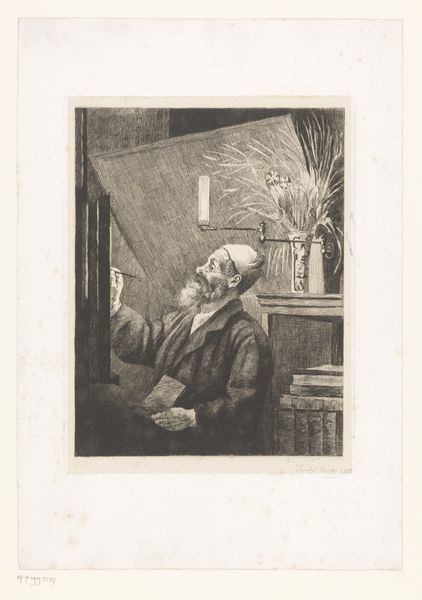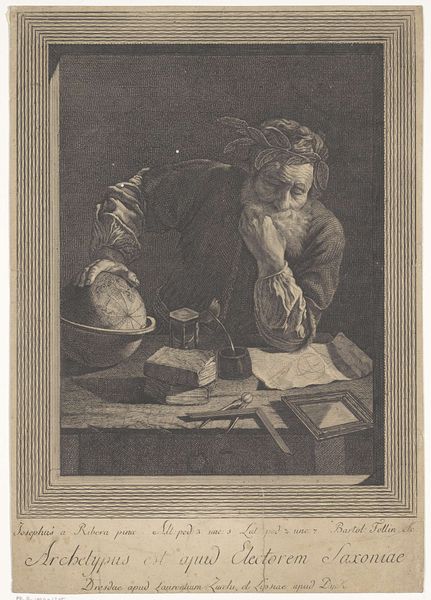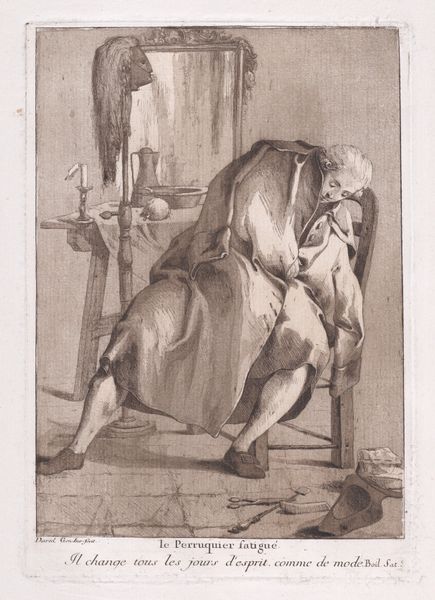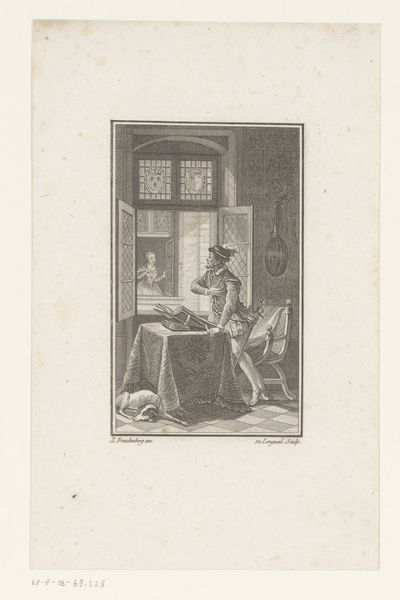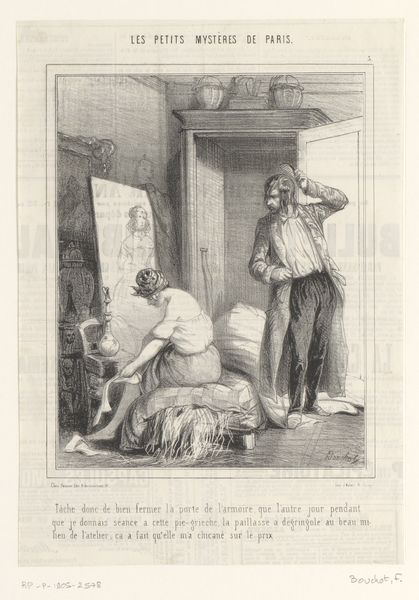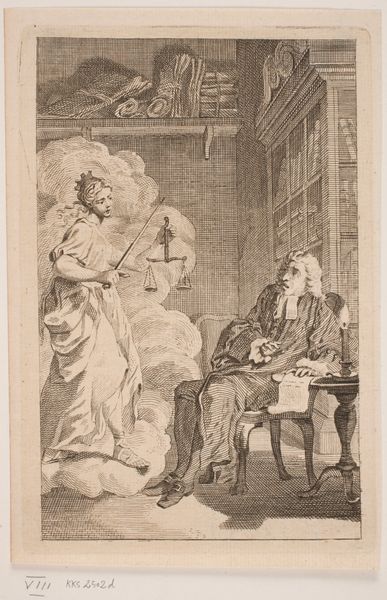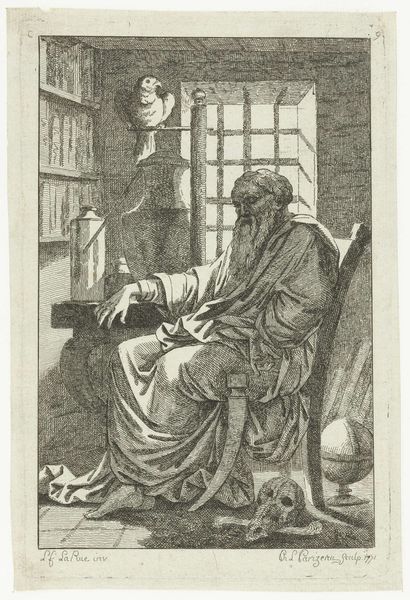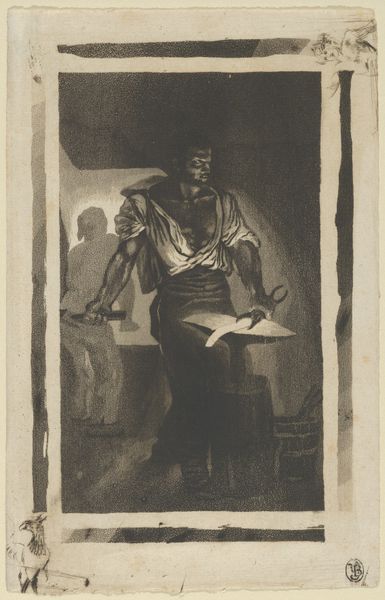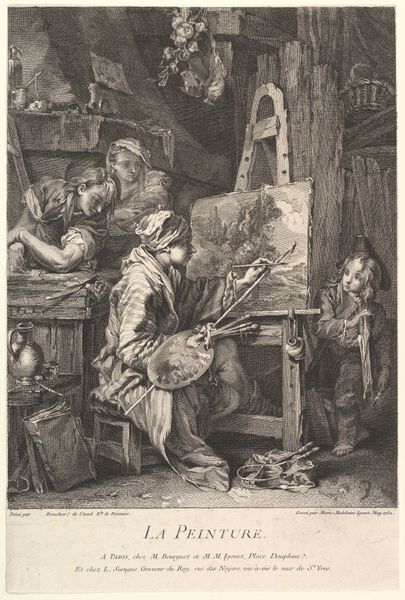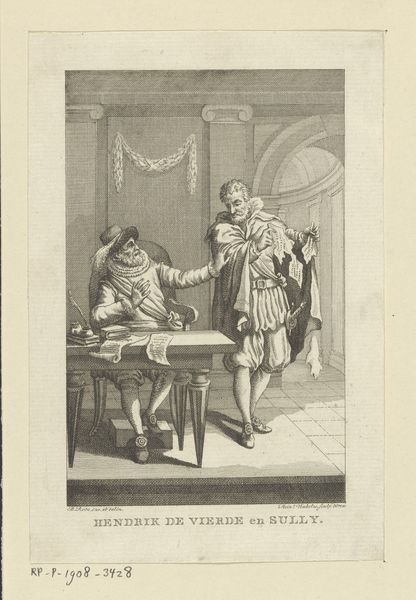
engraving
#
portrait
#
baroque
#
figuration
#
line
#
engraving
Dimensions: height 246 mm, width 169 mm
Copyright: Rijks Museum: Open Domain
Curator: This engraving, attributed to Jean Morin and dated circa 1610 to 1650, is titled "H. Bernardus aan een schrijftafel." It’s currently housed here at the Rijksmuseum. Editor: My first impression is of luminous quietude—a kind of intellectual dreaming captured in ink. The lines create such a peaceful atmosphere. Curator: Precisely. The composition utilizes linear precision to depict the saint in a moment of contemplation. Notice the strategic hatching which serves to create contrast and highlight the textural qualities of his robes, adding depth. Editor: And how interesting the subject seems transported from the immediate labor implied by his writing desk. This contrasts strikingly with what must have been the arduous material processes behind printmaking in this era. What do we know about how engravings such as these circulated? Curator: This kind of image would have served devotional purposes; likely widely distributed, it embodies Baroque visual strategies, evoking emotion while simultaneously providing detailed iconographic cues for recognition and understanding. Editor: That small bird emerging from clouds—presumably a visual metonymy for the Holy Spirit, guiding the hand of St. Bernard as he writes... Then the books themselves: each representing theological lineages culminating in the open volume held by angels. Considering the materials, how does the intimacy of the relatively small engraving change how audiences engage these heavy concepts, if at all? Curator: That's perceptive. Scale dictates access—rather than a fresco commanding awe from a distance, the delicate linework invites a more personal, contemplative encounter. The engraving offers itself, subtly prompting spiritual introspection through aesthetic experience. Editor: The materiality also provides access. Such images made the power of the Church and these key texts accessible to a larger, middle-class audience through relatively inexpensive reproduction. Curator: A nuanced point. It reminds us to acknowledge how the materials used, and processes of reproduction, impact reception. I find it compelling how Morin leverages engraving, not simply as replication, but as an elevated artistic choice. Editor: So, here, what initially felt delicate proves a rather cunning blend of labor and access to spiritual tradition via repeatable image? Fascinating! Curator: Precisely, a demonstration of form informing function and history informing both.
Comments
No comments
Be the first to comment and join the conversation on the ultimate creative platform.

